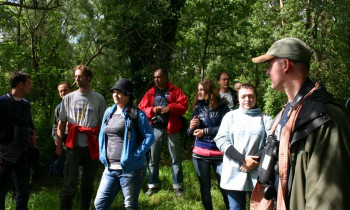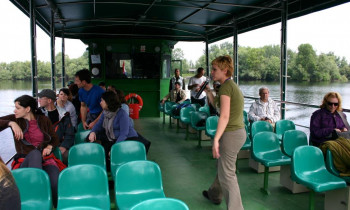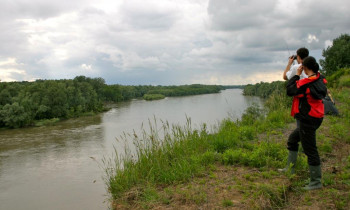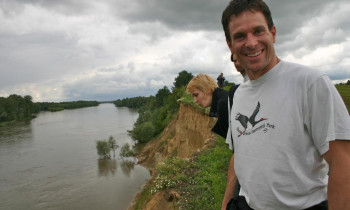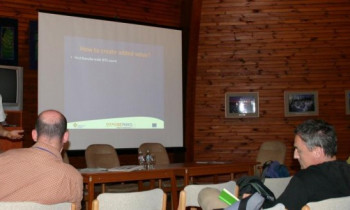Black Poplar is one flagship species of the project: The old trees provide suitable breeding habitats for many birds, while young ones serve as indicators for river dynamics as they rejuvenate only on open pioneer habitats like gravel and sand banks. This species therefore perfectly links all the topics of the Task Force Meeting, that took place in beginning of June, organized jointly by Duna-Dráva National Park and Kopački-rit Nature Park.
Most partners brought with them the Black Poplar leaf samples for the planned genetic analysis. The results will be the basis for future reforestation actions, where only non-hybridized poplars and if possible regional phenotypes should be used. Mapping of Black Poplars has started in all partner areas, so the base for the online cadastre is under development. The database itself is also on a good way and will probably work similar like the White-tailed Eagle database (established in the first project).
White-tailed Eagle is already the next keyword: In 2014, a Danube-wide coordinated winter count is organized by the project partners. The framework methodology has been fixed, although variations are possible according to different habitats, vegetation, etc. Also, the coordinators for each country were established, who will take care of the proper data exchange and publications.
Birds are also relevant for a topic that doesn’t seem to be very connected, namely river dynamics. The Danube-wide Monitoring of indicator species – Sand Martin and Little-ringed Plover – is currently under implementation. At the meeting, concepts for a Danube WILDisLAND project were further discussed and elaborated, which will also be a topic at the cross-sectorial conference with the NEWADA duo project in October.
The excursions gave an insight and overview of the whole region: During the first day, the workshop took place on a boat, passing parts of the Drava and the Danube Rivers, and was interrupted with short stops for field visits. On the second day, a terrestrial excursion in Duna-Dráva National Park showed the forest habitats as well as steep river slopes, both priority habitats within the DANUBEPARKS STEP 2.0 project. On the third day, a boat excursion on side channels within the Kopacki-rit Nature Park opened yet another perspective on the rich biodiversity in this cross-border area.
